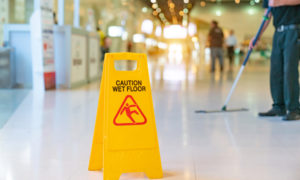Complete Guide to Child Car Seat Laws in Florida

Every parent’s top priority is their child’s safety, especially when traveling in a vehicle. Florida’s child car seat laws are designed to minimize the risk of serious injury or death in the event of a crash.
However, understanding the exact requirements based on a child’s age, weight, and height can be confusing. This guide breaks down everything parents, guardians, and caregivers need to know to stay compliant with the law and protect their young passengers.
The following sections provide a complete overview of how Florida law governs child passenger safety, from booster seat rules to penalties for violations, and what parents should do to avoid legal trouble and devastating injuries.
Florida’s Child Car Seat Law at a Glance
Florida Statute 316.613 outlines the child restraint requirements for motor vehicles. The law is designed to protect children based on their age and size and mandates that all children aged 5 and under be properly restrained in a crash-tested, federally approved child restraint device.
Children aged 0 to 3 years must be secured in a separate carrier or a vehicle-integrated child safety seat. From ages 4 to 5, they may use an individual carrier, an integrated child seat, or a booster seat. The law allows caregivers discretion, but best practices recommend keeping a child in the most protective device appropriate for their size.
Why Age and Size Matter More Than Age Alone
Although Florida law sets age-based minimums, national safety experts like the American Academy of Pediatrics emphasize that weight and height should be the leading factors in choosing the proper restraint. A child may legally be able to use a booster seat, but they are at significant risk if they are too small to sit safely with a seat belt.
Children should remain in rear-facing car seats until they are at least 2 years old or until they reach the seat’s height or weight limit. Forward-facing seats with a five-point harness should be used for as long as possible before transitioning to a booster.
Stages of Car Seats and Florida Guidelines
- Rear-Facing Seats: These are the safest options for infants and young toddlers. Rear-facing car seats should be used until a child reaches the seat’s upper weight or height limit. Many models accommodate children up to 40 pounds.
- Forward-Facing Seats: Once a child outgrows their rear-facing seat, they can transition to a forward-facing seat with a harness. Florida law permits this change after age 3, but safety experts advise keeping children in these seats until age 5 or longer if the seat allows.
- Booster Seats: Designed to raise a child so the vehicle’s seat belt fits properly, booster seats are typically used from ages 4 to 12. Children should remain in a booster seat until they can sit with their back against the seat and knees bent over the edge without slouching, which usually occurs around 4 feet 9 inches in height.
- Seat Belts: A child can use an adult seat belt alone when it fits them correctly. That means the lap belt lies snugly across the upper thighs, not the stomach, and the shoulder belt crosses the chest and shoulder without touching the neck or face. This stage often begins between the ages of 10 and 12.
Exceptions to the Law
Florida law includes certain exceptions to the child restraint rule. For example, school buses, taxis, and vehicles used for hire (such as limousines) are not required to provide car seats. While these exceptions exist, the safety risks remain, and parents should bring appropriate restraints whenever possible.
Additionally, children with medical conditions that make standard restraints unsafe may be exempt with proper documentation from a physician.
Common Mistakes Parents Make with Car Seats
Many parents believe they are using car seats correctly when, in fact, minor errors can compromise safety. Common mistakes include:
- Installing the seat too loosely
- Not using the tether strap on forward-facing seats
- Transitioning to the next seat stage too early
- Letting the shoulder straps become too loose
- Not securing the chest clip at armpit level
Proper installation is essential. According to the National Highway Traffic Safety Administration (NHTSA), nearly 59% of car seats are misused, which can reduce their effectiveness.
Penalties for Violating Florida Car Seat Laws
Failing to comply with child car seat laws in Florida can result in a noncriminal moving violation. The penalty includes a $60 fine and three points on the driver’s license. However, first-time offenders may be allowed to attend a child restraint safety program instead of receiving points.
Beyond the fines, the real cost can come in the form of increased injuries if a child is not adequately restrained in a crash. An accident lawyer in Florida often sees cases where improper restraint led to life-altering consequences.
Crash Statistics Involving Unrestrained Children
Child restraint systems significantly reduce the risk of fatal injury. According to the Centers for Disease Control and Prevention (CDC), car seats reduce the risk of death by 71% for infants and 54% for toddlers in passenger vehicles.
In Florida, data from the Department of Highway Safety and Motor Vehicles (FLHSMV) shows that hundreds of children are injured or killed in crashes each year, many of whom were unrestrained or improperly restrained. These are not just numbers—they are lives that might have been saved through proper car seat use.
Tips for Choosing the Right Car Seat
Choosing a car seat goes beyond just meeting legal requirements. It is about maximizing safety. Key factors to consider include:
- Checking the car seat’s expiration date
- Ensuring it has not been involved in a crash
- Looking for a label showing it meets federal safety standards
- Ensuring proper size and weight compatibility for your child
Parents should also avoid second-hand seats unless they can verify the seat’s history. Even minor crashes can compromise a seat’s integrity.
Installing a Car Seat: Help is Available
Proper installation is crucial. Fortunately, Florida has many certified Child Passenger Safety Technicians (CPSTs) who offer free help. Local fire departments, police stations, and hospitals often provide installation checks. Safe Kids Worldwide and other organizations offer resources to find inspection events and trained technicians.
It is always better to have a professional double-check the setup, especially for new parents or those transitioning to a new seat type.
When Can a Child Sit in the Front Seat in Florida?
Florida law does not specify a minimum age for children to ride in the front seat, but the CDC and safety experts recommend keeping children in the back seat until at least age 13. The back seat is statistically the safest place for a child to ride, mainly because of the dangers posed by airbag deployment.
Airbags can seriously injure or kill children under 13, particularly if they are not tall enough or if the seat is too close to the dashboard.
How Car Seat Laws Affect Personal Injury Claims
If a child is injured in a car accident and was not properly restrained, it can impact any personal injury claim. Insurance companies may argue comparative negligence, potentially reducing compensation. While this does not absolve the at-fault driver, it complicates the legal process.
A Florida injury attorney can help parents navigate these issues, especially if an insurance adjuster tries to place blame on them. Legal support can also assist in gathering medical documentation and expert testimony to show that any error in restraint use did not cause the primary injury.
Real-World Cases That Show the Importance of Car Seat Laws
Car crashes are unpredictable, but the consistent variable in many child injury outcomes is whether the child was properly restrained. In 2023, a collision on I-95 near Jacksonville involved a family whose toddler was secured in a rear-facing car seat. Despite a high-speed impact that totaled the vehicle, the child sustained only minor bruising. Authorities credited the survival to the car seat’s correct installation and the child’s appropriate positioning.
In contrast, a 2021 case out of Tampa highlighted the tragic consequences of neglecting safety laws. A four-year-old riding without a booster seat suffered severe internal injuries during a crash. The seat belt, designed for adults, had ridden onto the child’s abdomen. The family later filed a lawsuit, citing a lack of seat belt fit education, and sought damages for extensive medical care.
These stories show the life-saving impact of car seat compliance—and the risks when ignored. A Florida injury attorney can use these details in court to demonstrate the clear connection between restraint use and injury severity.
Further Details: How Car Seat Use Affects Personal Injury Claims
When a child is injured in a crash, one of the first things insurance adjusters may investigate is whether the child was properly restrained. If there is any indication of misuse or premature advancement to a booster or seat belt, insurers may argue that the injury was partly the result of negligence by the parent. This tactic, known as comparative fault, can reduce compensation even when another driver caused the crash.
Evidence like police reports, medical evaluations, and expert assessments of the restraint system can counteract these tactics. An accident lawyer in Florida can help secure testimony from certified child passenger safety experts to clarify whether restraint misuse actually contributed to the injury. Legal guidance becomes crucial when fault is disputed or when an insurer tries to avoid full liability.





















